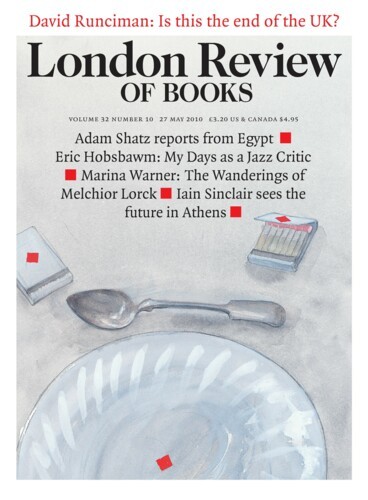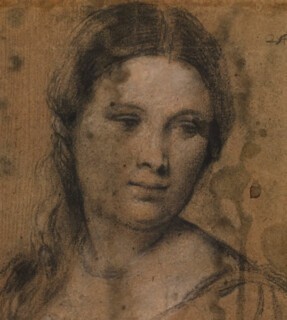Three mundane facts say superficial but significant things about the look and content of the drawings, particularly the earlier ones, in Fra Angelico to Leonardo: Italian Renaissance Drawings at the British Museum (until 25 July).
First, paper was expensive and vellum more so. The drawings tend to be small and nothing is wasted – variations or new subjects are often found on the other side of the sheet or in unoccupied corners. Second, painters kept hold of drawings so that an unfamiliar thing, a cheetah say, or a difficult one, such as a gesturing hand, or even whole figures, were there to be reused – drawings were tools of the trade. Third, time has winnowed Italian Renaissance drawings. What is left is a small fraction of the total, unrepresentative and rarely in perfect condition.
By the 16th century, however, even preliminary drawings were prized for themselves and collected – two of those here are shown with the pen and wash frames Vasari put round them when he added them to his album – and time, while it has destroyed much, has selected well. Many of the drawings that have come down to us are very beautiful. Collectively, those in this exhibition, all from the Uffizi and the British Museum, offer a vast amount of information about the art and craft of drawing and the place it had in picture-making.
The spread of printing led to an increase in paper production and when books and prints could supply ready-made reference material – anatomical, architectural, botanical, zoological and geographical – drawing began to change. It became less necessary as a workshop resource, more important as a vehicle for exploration and invention. If this were an exhibition of paintings they would be easier to label. With drawings you need words to describe uses and the degrees of finish: ‘scribble’, ‘sketch’, ‘cartoon’, ‘study’, ‘design’, ‘contract drawing’. Some drawings, made as ends in themselves, can be called ‘presentation drawings’, others may have been made as part of a painter’s education. Some seem to have no purpose other than to please the maker. In Leonardo’s red chalk profiles of an old and a young man, young beauty and crumpled age are so well represented in the young man’s ringlets and the old man’s wrinkled skin that pleasure in mastery is reason enough for their existence.
Pages of studies of a cheetah, a goat and a ram, dated to the early 1400s, are from a model book. Drawn in fine detail, with no second thoughts, they may be fair copies of drawings from life; certainly someone at some point saw a cheetah’s snarl for real. The charm of this kind of precise detail matches that of the marginal flowers, beasts and birds in manuscript illustrations. In pen drawings by Lorenzo Monaco from about the same time, compositional studies that relate to an altarpiece now in the National Gallery, cloaked figures with scribbled faces are moved about like chessmen. The rhythms, dignity and formality of the altarpiece come later, like the capital of a classical column in an architect’s rough sketch. The drawing shows how well-understood elements will be arranged.
In Parri Spinelli’s drawing from the mid-1400s of St Peter holding a key, Peter’s cloak, like one of those skirts made of layers of handkerchiefs, hangs down in points. Delicate cross-hatched shadows and curling lines depict overlapping hems that outdo the vestments of even the least austere of modern ecclesiastics. Pisanello’s drawing of three courtiers in short coats with flared sleeves was made around the same time. Their upper garments, fluted and gathered into elegant, fur-trimmed balls, are made even more outrageous to our eyes by the huge hats, tight ringlets and delicate legs in hose and slippers that give the figures the profiles of pantomime chickens. But one doesn’t doubt that they are well observed. Like Pisanello’s drawing of hanged men, they speak of things known at first hand, not, like Spinelli’s St Peter, things invented.
The chronological ordering of the exhibition encourages such observations, so when you arrive at Fra Angelico’s sweetly decorative manuscript illustration of King David you notice that the gesture of the hand must be the result of someone’s careful observation of what a bent wrist and separated fingers can be made to say and how a foot can be made to rest firmly on the ground. It is dated c.1430 – one can imagine a contemporary versed in Spinelli seeing this and thinking: ‘Ah, so that’s how it’s done.’
People begin to seem more alive, more likely to move, though learning about movement could come from sculpture; the Gozzoli drawing of a nude man with a horse is based on the Horse Tamers on the Quirinal Hill. You can trace increasing technical competence of one sort or another through to the 1500s. Perspective, seen first in the laborious study, probably by Uccello, of a chalice – a wire-frame view that a competent computer graphics technician could run up in no time – is made wonderful by the date (c.1450-70) and the sense it gives of an invention arriving that would, for better and worse, transform painted space. In Leonardo’s study for the background of his unfinished Adoration of the Magi the perspective grid that spreads like a pavement across the bottom half of the sheet, and the staircases and the structures that rise from it, are like a stage set. Ghostly horses, riders and a camel inhabit it – in the painting the camel and much else has been changed. When alternative ideas are tried out in this way drawing becomes a way of thinking. In a few cases enough survives to illustrate the whole process. In the two studies here of Raphael’s Entombment (out of 16 that survive) adjustments to the placing and the angle of heads and legs of the figures around the body of Christ articulate the whole by way of linked looks and gestures. People don’t just stand about, they engage with each other.
Loss of spontaneity is a side effect of all this. The cartoon of Raphael’s St George – the painting is in the Louvre – is in the exhibition (a reproduction of the verso in the catalogue shows the pricked holes through which powdered chalk or charcoal would have been rubbed to transfer the design onto the panel). Essentially the drawing is stronger, the painting prettier. In the exhibition it is the things drawings do that painting can’t which stick in the mind. In Italian paintings of this period the paint is smooth: in the drawings the handwriting, as it were, is nearly always apparent. The Titian portrait of a young woman (c.1510-15), which takes you well into the 16th century, is also the drawing in the exhibition that brings you closest to the look of flesh – soft shadows delimit the features of a plump, young, serious face without outlining them. Yet, perhaps because hair and clothes are clearly drawn, one still feels the artist’s hand finding shapes as it marks the sheet.
The Michelangelo drawings here – unlike the presentation drawings that were recently shown at the Courtauld – are made from strong (sometimes it seems impatient) pen strokes and flurries of chalk lines that note and exaggerate the muscles of a leg or the fall of fabric. These are the kinds of drawing he burned late in life. Vasari reports that he wanted no one to see the way he ‘toiled and stimulated his creativity’ but we are pleased to peer under the bonnet to see the imagination grinding away. Sometimes a drawing can look more like a copy of a painting than an exploration of what the painting will be. The ruled lines in Carpaccio’s Vision of St Augustine are neatly mechanical, the drawing is very like an architect’s perspective. It makes you impatient for the painting to be built. The studies of drapery – there are many – determine the fall and flutter of cloaks and hems that give compositional coherence to the paintings they relate to. Isolated from the figures, as Christ’s enveloping shroud is in Boltraffio’s study for his Risen Christ, they are wonderful still lifes. It will be centuries before Cézanne’s white tablecloths again give fabric such nobility. But sometimes a drawing actually delays resolution, keeps options open while advancing the central idea of a composition. The central image in the sheet of Leonardo’s studies for The Virgin and Child with St Anne is a tangle of overdrawn pen and chalk lines, a dark mass through which the poses of the National Gallery cartoon emerge like a powerful theme through complex orchestration.
Individuality emerges most coherently in independent drawings. Mantegna’s Allegory of the Fall of Ignorant Humanity shows a row of naked figures arranged on a narrow, paved shelf: arguably, Ignorance, Avarice, Ingratitude, Deceit (a man with his head in a sack leading a dog), Lust (a satyr playing a hornpipe), an ass-eared Error leading a blind woman to a precipice. The white highlights that pick out the muscles make flesh sculptural, the drawing is entirely confident and neat; it could be a carved frieze. The intense, scholarly, precision of his paintings is in this drawing too. Where Mantegna’s flesh is marmoreal, the flesh in Botticelli’s unfinished Allegory of Abundance, seen through a transparent, gathered and puckered dress, is soft. Mantegna’s static, archaeological toughness and Botticelli’s lightly stepping sensuality were achieved within ten years of each other. These are among the grandest sheets in the exhibition, but others, despite faded ink, rubbed chalk and the fact that in many cases they were not intended to be kept, show how, over the span of a century, the things drawing could do were made use of, explored and delighted in.
Send Letters To:
The Editor
London Review of Books,
28 Little Russell Street
London, WC1A 2HN
letters@lrb.co.uk
Please include name, address, and a telephone number.


